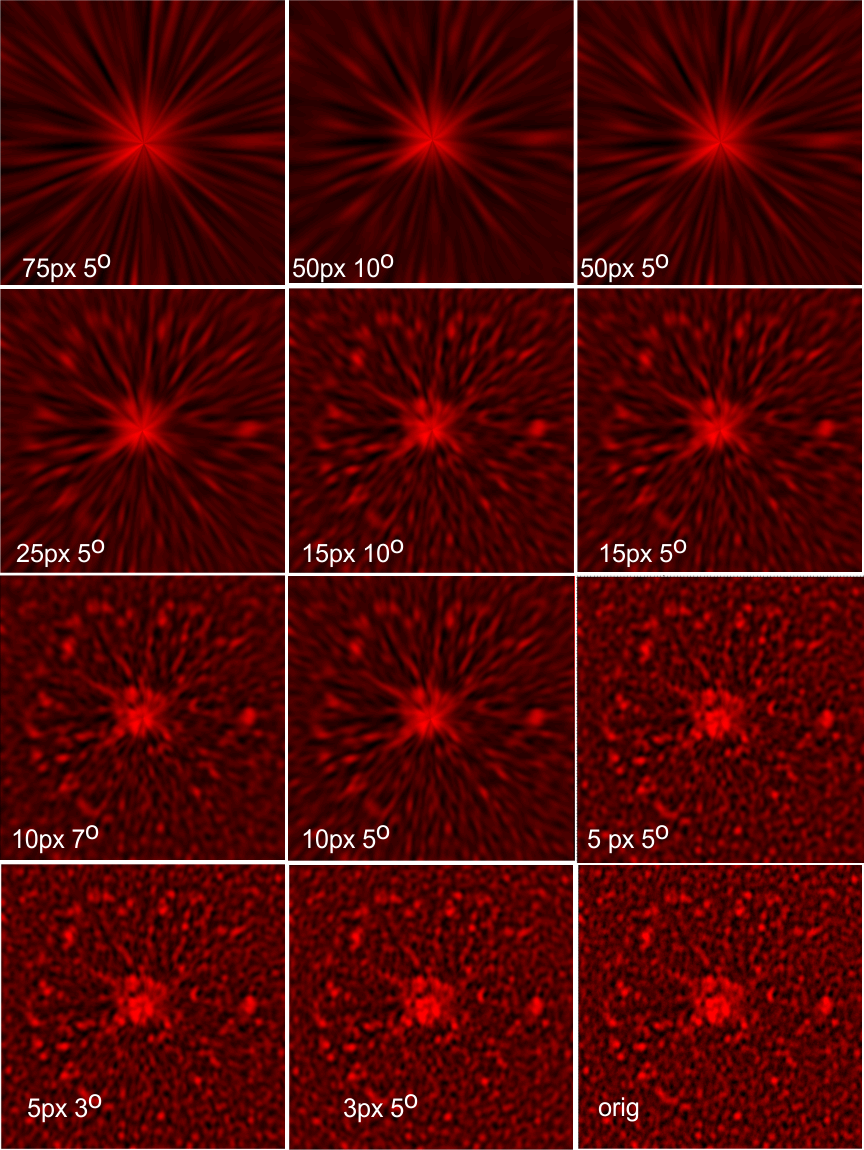Gwyddion’s image distortion>radial smoothing on an SP-D multimer: A series of distortion options were applied to an already nice rotary shadowed image of a recombinant SP-D molecule (kindly supplied by Grith Sorensen and shadowed by Jack Griffith) shows the extreme processing available through this program, but also it shows that slight processing actually can enhance elements of the image. Original is bottom right. Degrees of radial smoothing and pixel counts are provided in each of the images. One arm, image below, was particularly close to what is seen with AFM. It has a great CRD (even with three-shadowed areas) a neck like thinning area, and bumps along the collagen-like-domain, and a bright spot where some say there is a glycosylation site, which may or may not show up here, and the N termini group (part of which is cropped out). You can find this trimer in the top 11 processed images as well as the original (bottom right).

 Gwyddions website states thus: Data Process → Distortion → Radial Smoothing “Radial smoothing processes the image with a Gaussian smoothing filter, but in polar coordinates. This function is useful for images which should be relatively smooth and exhibit radial symmetry.
Gwyddions website states thus: Data Process → Distortion → Radial Smoothing “Radial smoothing processes the image with a Gaussian smoothing filter, but in polar coordinates. This function is useful for images which should be relatively smooth and exhibit radial symmetry.
The image can be smoothed either along radial profiles – with Gaussian filter width controlled by Radius – or angularly along arcs of constant radius from the centre – with width controlled by Angle. The transformation to polar coordinates and back does not preserve the image perfectly. Subtle (and occasionally less subtle) artefacts can occur, in particular close to the centre, even with no actual smoothing.”
A couple of things to note are: The deep darkening of the image (presumably if this were AFM it would be a valley in the LUT plots) next to the larger (but not dead center) bright ring. This could correspond to the same peak just lateral (lateral in the sense of concentric and outside the center of the multimer) the alleged glycosylation site in AFM images.
Following the rays as they are processed from the original to 75px radius and 5degrees, it seems to show about 7 arms (maybe 8 — which would me a nicer number, as in — comprising 4 dodecamers), each relatively equally spaced around the center N termini bright spot. Also, the central bright spot, which is consistent in AFM images, can appear one of two ways, 1) like a single non-splitable peak, or 2) more like a ring with a hollow center. It has been my suggestion since the beginning, and a major part of the reason for my examining the SP-D multimers, is that sometimes (not the majority of times) the N termini junctions might be side to side, not end to end.